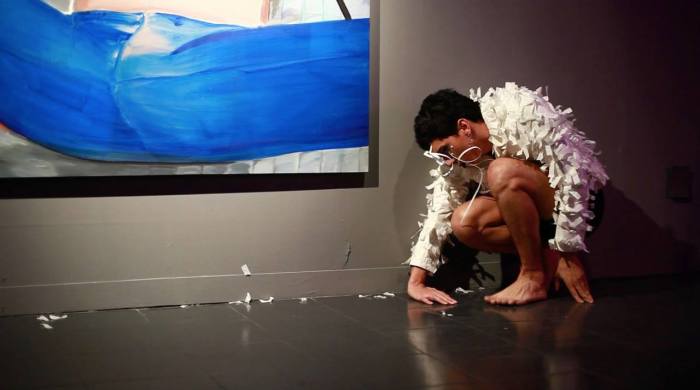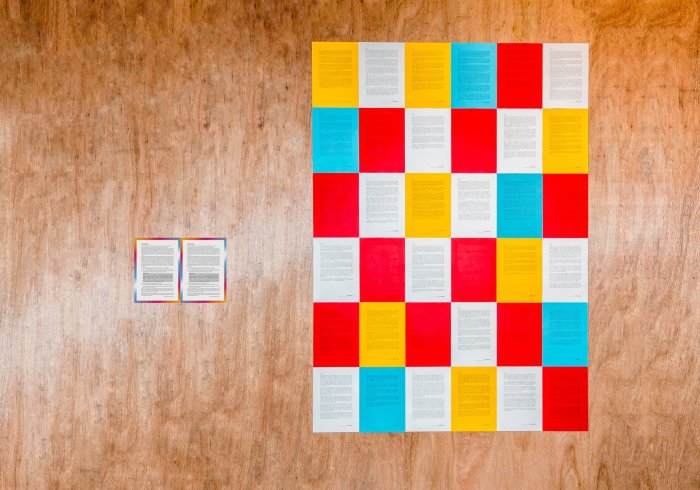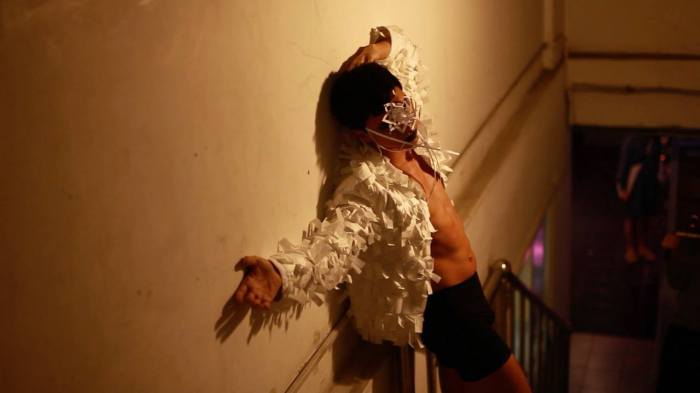Written by Cynthia Sungjae Lee for QA Blog Series “What is ‘Queer’ in South Korea? Explorations of art, identity, and ‘queerness’” curated by QA2018 Committee Member Amy Kahng

As an artist, I expose the presence of subjects in the fringes of society by revealing the limitations of the privileged “center” through my artworks. From a socio-political perspective, this center is a construct created by norms, and it exercises an overshadowing influence on the fringe because of its implicit acceptance by the social majority. Despite the dominance of the center, it is the fringe that catches my eye. Meaning is produced when we are aware of our surroundings, and I endeavor to reduce the authority of the center to allow people to recognize the existence of the fringe, and thus enrich our society with the value of diversity.
“The influence of labeling is so strong for an artist’s career; it standardizes characteristics of an artist’s work and thus limits their potential to expand into new creative territories.”
Despite my interest in shedding light on the fringe, it has been difficult for me to create and exhibit queer-themed pieces in South Korea due to its conservative belief perceived by the majority. Because artworks are representative of the artist when exhibited in galleries, I often worry about revealing my sexual identity during public exhibition. I cannot proudly present my work because I have learned through my life in Korea that outing myself often does more harm than good. Furthermore, there is the risk of being labeled as a “queer artist” and, consequently, all of my works being interpreted as “queer artworks,” even if I may choose to create a piece that is unrelated to queer issues. The influence of labeling is so strong for an artist’s career; it standardizes characteristics of an artist’s work and thus limits their potential to expand into new creative territories.

It is in this context that I submitted my text work “Men I Have Ever Met” which I signed with the name of my alter-ego, “Cynthia,” at SEMA in 2016. To illustrate how gay relationships have changed through the emergence of technology, such as smartphones and social media, I wrote various stories that I have had with guys since 2008, when I came out to gay society. Since the work contains not only bittersweet love stories but also one-night stand stories, I chose not to reveal my private history with identity, even though my work intended to examine the power that could be generated by displaying one’s personal narratives in public. Therefore, I created my alter-ego and chose text as a medium in order to avoid the risks that could come with outing myself.
However, in 2017 the approach to presenting my work contrasted with my previous exhibiting experience. I was less fearful when I presented my performance piece “Fringe” at the art space, Hapjungjigu. Because the exhibition’s main theme was “drag,” I still hesitated to participate, because it could potentially reveal my sexual identity and restrict my work to be labelled as ‘queer’ art. Nevertheless, I was able to present the work with my real name and summoned the confidence to be myself because I was collaborating with Nix, a Brazilian drag artist. The collaboration with this courageous drag artist led me to rethink not only the importance of genuine presence as the essence of performance art, but also the political power of artwork produced by openly queer artists. I experienced that I was actively engaging in my artistic concentration or duty—adding diversity to a society—by communicating with audiences and conveying my message to them directly.

I am now pursuing my master’s degree in the US, where there is greater awareness of sexual diversity and queer rights than in Korea. By studying in a culturally enriched environment, I hope to further include queerness into my work and to continue to boldly exhibit these works.
SUNGJAE Cynthia LEE is a Korean artist working in immaterial media such as performance, installation, and video. He received M.F.A. and B.F.A in Sculpture from Seoul National University. He has presented his works at Seoul Museum of Art, Hapjungjigu, XPO Cheongyang, Art Sonje Center (South Korea), Galleri CC, and KHM gallery (Sweden). He was also video and stage producer of the theater group Bjung(丙) Society and presented several pieces at play festivals. He is currently living in Chicago, IL and pursuing his M.F.A. at The School of the Art Institute of Chicago.
About the blog series What is ‘Queer’ in South Korea? Explorations of art, identity, and ‘queerness’ :
Drawing from the diverse perspectives of a curator, artist, and podcast host, this blog series investigates the categorization and perception of queer art in South Korea. It is being curated by Amy Kahng, an emerging curator and art historian. Her research interests include contemporary art of Asia, Korean video and performance art from the 1960s-90s, and the intersections of queer theory and art history. She is based in Los Angeles and Seoul. She can be reached at askahng@gmail.com
Other blogs in the series:
